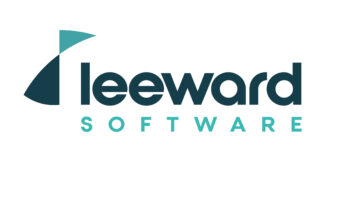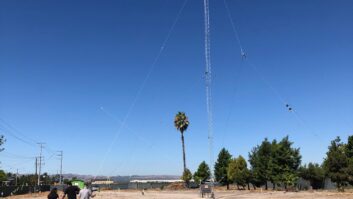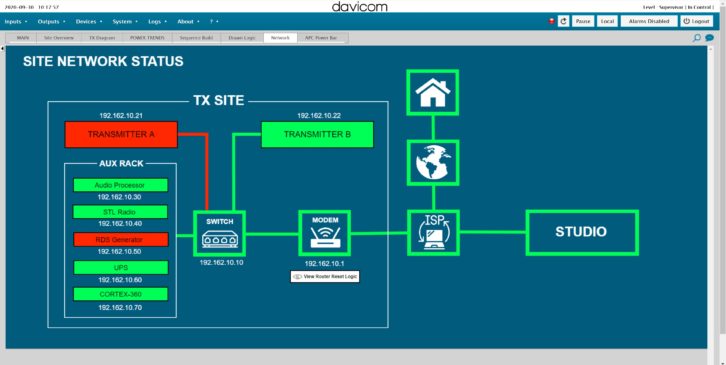
If they are to manage effectively, radio broadcast engineers need good, reliable data about all of their stations, including distant transmission sites.
As Matt Leland of Burk Technology puts it, “A modern remote control system enables engineers to focus their efforts on the most critical tasks, reducing off-air time and eliminating unnecessary travel to remote sites.”
How can you get the most out of this broadcast infrastructure tool, and how are remote controls evolving?
We asked several manufacturers.
Getting started
Nicolas Boulay, co-CEO of WorldCast Group, notes how far the technology has come.
“Twenty years ago it was wonderful to receive a simple SMS over GSM, alerting me which relay was OFF, even if that information was received five minutes after the event,” he said.
“Now technology offers much more, but the goal remains the same: to control and manage remotely.”
He thinks the most important point is to define the purpose of your remote control, to decide what kind of information is useful for each action, rather than just aggregating a lot of data.
“In the past, it was the opposite; it was the technology capacity that defined what the user could do. Today, it’s the user who defines what he or she wants, and can ask more or less for everything.”
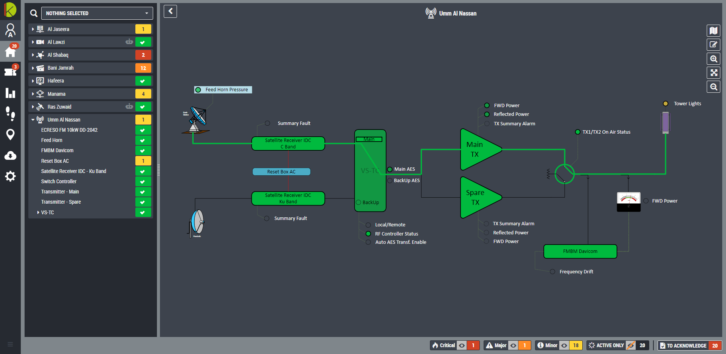
CircuitWerkes President Kyle Magrill said many factors go into selecting a remote control.
“First, make an ordered ‘wish list’ of features that you need and then add the features that you want,” he said.
“Second, make a list of features that you dislike and don’t want to have in your system.”
An example of desirable features might be multiple ways to connect to the product such as network, serial port and telco. An undesirable feature, Magrill said, might be the lack of an indication that the network connection to the user interface is lost, misleading you into thinking that you’re connected to the remote unit when you’re not.
“When deciding on the actual product, don’t waver on the ‘must have’ features, and try not to compromise on the more ‘desirable’ ones,” he continued.
“Remember that you will have to live with your choices, possibly for many years. For example, if you site is very remote, you may want to get a remote control that has both telco and internet capability, for redundancy. Don’t settle for one that has only one or the other. If you have multiple sites, it might be important to have a set of remote controls with the ability to be simultaneously monitored from your network operations computer.”
Bob Tarsio, president of Broadcast Devices, encourages customers to be well-informed both before and after purchase.
“The best way to have a good outcome is to read the technical manual thoroughly before planning the installation. This way you know what you need to do and in what order including information needed for setup, tools to have on hand and how to get the most out of customer support.”
Plan the installation for when you have time to do it right and have the resources you need when calling customer support.
“Things like having your laptop ready to go, a good internet connection and a good telephone to call for support when you need it,” Tarsio said. “This may sound basic, but all of these things go into a good experience for fast installation and easy setup.”
Ask your vendor what’s included, such as software and SNMP capability. Tarsio reminds customers to consider options that BDI offers such as expansion panels, premade cables for motorized switch interfaces, transmitter interface cables and accessories such as prewired temperature and pressure sensors.
Connectivity is another factor to ask about and understand. “Since our SWP-300 series are SNMP agents, they can be connected via our provided GUI or even the competition’s system. Just load our MIB into brand X or Y SNMP-based remote control and you have complete control and monitor capability of every parameter on one system. This also allows NOCs to easily interface to a site with one MIB file.” (Management Information Base, or MIB, is a text file that lists data objects used by a piece of SNMP equipment.)
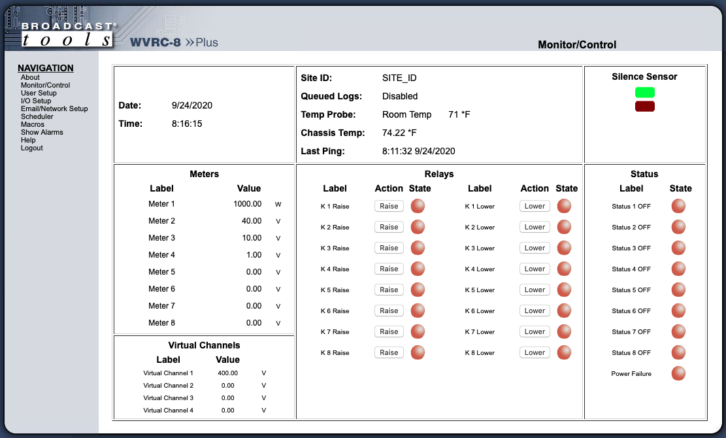
Things to remember
At Broadcast Tools, Don Winget is founder and president, and Ben Nason handles product development, tech support and engineering.
“Start with the basics, which means setting up email alarms,” they wrote by email. “For broadcasters who are not necessarily IT experts, configuring a remote control to send email (SMTP) can be a little daunting, but it’s easy once you know what server settings to use.”
For those who don’t already have that information, they recommend using an SMTP service from third-party provider SMTP2Go, which features multiple authentication options as well as email tracking for more advanced users.
“Once you have alarms and email set up, you might want to delegate some local functions to the remote control,” they wrote.
“The easiest way to do this on our remote controls is with a feature we call the Event Action Sequencer, which uses a simple syntax for logic functions. All you need to do is fill in the blanks.”
For example, to trigger a relay output for one second when a high-temperature alarm occurs, the configuration would be: When (Temperature) is (in High Alarm) delay (0) seconds then engage for (1) second.
“The email inbox isn’t always the best mechanism to get people’s attention when the remote control detects a problem,” Winget and Nason noted.
“Luckily almost everyone has a cellphone, and the cellular carriers provide email-to-SMS text message gateways that make it easy to convert an email alarm message into a text message using a special email address with customer’s phone number in it.”
For more advanced users interested in getting started with SNMP, they recommend checking out MIB Browser from iReasoning, a cross-platform application for working with SNMP MIB files, SNMP traps and accessing data/controlling devices using SNMP GET and SET.
Think broadly
Matt Leland, the director of sales for Burk, recommends that you think of this whole process as managing your facility and not just the transmitter.
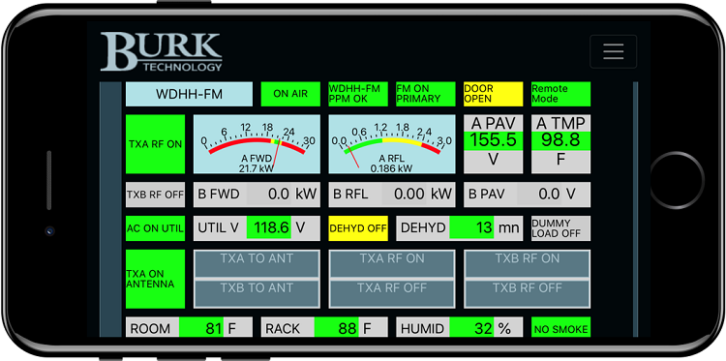
“Monitor your critical systems: tower lights, transmission line pressure, room temperature, air chain equipment, silence sensor, PPM to name a few,” Leland told Radio World. “Use timer channels to keep track of tube life or hours on the filter in your air handler.”
Burk clients can use the company’s Jet Active Flowcharts to automate site functions such as switching to the standby transmitter.
“Use remote data captures as an analytical tool, drilling down for additional detail related to alarms or equipment failures. Use virtual channels to calculate efficiency and to cross-check power metering by comparing measured power to calculated indirect power.”
Leland also recommends that you not set alarm notification thresholds too tight.
“Set each threshold at the point where you should take action. Use alarm roll-ups to consolidate notifications from a cascading event such as loss of power at your transmitter site.”
At Davicom, President John Ahern said a point of emphasis is the reduction of false or nuisance alarms.
“Having a remote control is supposed to reduce your workload,” he said, “but if it sends too many alarms, users will begin to mistrust it and their workload may actually increase! So fine-tuning thresholds and applying different measures to mitigate false alarms can go a long way towards making users more productive.”
Cloud thinking
We hear much these days about the cloud and the related subject of virtualization, so we asked the manufacturers how those conversations affect facility remote control planning or products.
Leland said Burk’s Arcadia is built for the virtual environment; it runs on an AWS Virtual Private Cloud instance or on an on-premises customer owned server, giving engineers access to their remote sites over one secure web link. Its graphical mobile interface presents high-level summary information with drill-down capability to access monitored equipment and functionality in the virtual and physical plant.
Davicom’s Ahern says moving to the cloud is a nice concept. “But consider Wikipedia’s definition: Cloud Computing operates on big data, while Edge Computing operates on instant data,” he said.
“I think that at the transmitter site, we’re talking more about Edge Computing and fast processing to react to issues like lightning strikes, equipment failure, network throughput reduction, to name just a few.”
Cloud computing requires an always-on link to the cloud, Ahern continued, but many transmitter sites may lose that link as soon as, for example, a UPS runs out at the cellular communications tower.
Although the cloud may be expanding slowly towards the transmission site, he said, a robust system should always have a smart Edge Computing device — the remote control — at the site to keep things running, or at least keep a log of what is going on, during bad situations.
“This Edge Computer should be capable of handling various tasks at the site, well beyond simply controlling the transmitter. The same device should be able to control and monitor subsystems like the HVAC, network, utility power and generator, antenna deicer, audio processors, backhaul links and of course, the transmitter.
“For example, it should be able to take control and try to restore connectivity to the studio (or the cloud) working from the remote end, while the station engineer is trying to restore things from the studio end.”
Asked about the cloud, Boulay at WorldCast Group noted that remote control designs naturally follow the evolution of infrastructure.
“At the beginning, remote control meant the management of physical I/O — analog, digital, relays. Then protocols like SNMP replaced I/O. And now, in the majority of cases, remote control means the management of API, including the cloud.
“So of course, technically speaking, tools for performing remote control are completely different. But the end goal is the same: to make sure your radio station or web radio is on-air or its stream is accessible, and to manage all the redundant processing automatically.”
For Winget and Nason of Broadcast Tools, the concept of “virtual” in this context means less focus on a central piece of hardware and more on remote control hardware as peripherals distributed throughout the studio and transmitter sites, tied together over the network with an SNMP manager that can collect, store and display data from devices all over the network.
“As a remote control hardware manufacturer our goal is to provide products with features that strike a balance between the need for local/standalone operation as well as network-based ‘virtual’ operation via SNMP,” they wrote.
“This is why we provide built-in features like a smartphone-compatible HTML-based web interface, a relay event scheduler, support for notification via email/texting and POTS telephone (on our WVRC-4 Plus and WVRC-8 Plus remote controls) in addition to support for SNMP.”
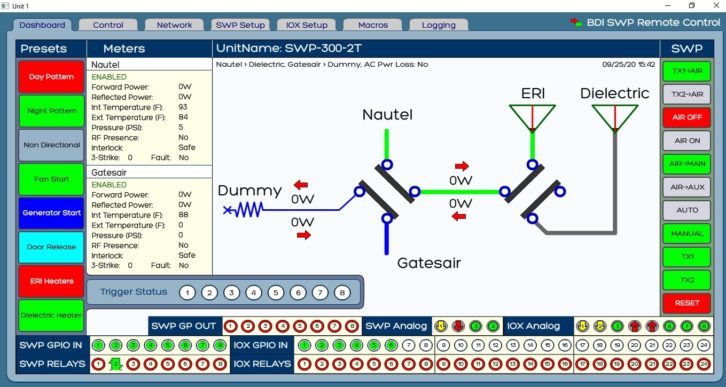
Important trends
What about other notable trends?
Ahern says that because everything is becoming network-centric, there’s more need for network status and performance monitoring.
“Being able to ping different network branches and devices, and using that information to automatically re-route data or re-start network elements, will help to proactively manage network infrastructure to keep it operating smoothly.”
Winget and Nason wrote, “This may be a no-brainer for some folks, but as we rely more and more on virtual systems and IP networked devices in areas like remote control and audio, it’s important to plan for what will happen when the network — be it your LAN, WAN or internet service — fails.
“This means being smart about implementing network failover and backup options like cellular modems or POTS lines so that you can maintain connectivity with your remote control when things go wrong.”
They also noted that web browser support for Adobe Flash Player is ending this year, which has obligated a number of manufacturers to develop updated web interfaces for their products.
“Several years ago we faced a similar situation with some of our products when web browser support for Java was significantly reduced. Like many others we chose to develop HTML-based web interfaces, which are now standard across our products. We feel that the shift to interfaces that use web standards like HTML5 has been a positive one for our customers, and as more manufacturers follow suit, that change benefits the industry as a whole in terms of accessibility.”
Bob Tarsio said that without question, SNMP has been a game changer.
“With Simple Network Management Protocol as a common standard, a user can interface different manufacturers’ equipment to a software or hardware platform easily with Cat-5 cables instead of a soldering iron and a crimping tool,” he said.
“We pioneered SNMP technology over 10 years ago with the DPS-100D power meter and the SWP-200 series motorized switch controller, which was the industry’s first SNMP RF switch controller.”
Now the company’s SWP-300 is SNMP-based and its software platforms all run with SNMP technology.
He said events and storage are a natural for cloud-based technology because the information can be obtained and stored off-site in case it is needed later. “Software platforms are undoubtedly going to be impacted by cloud technology as well. Software platforms can be run from the cloud from virtually anywhere to control anything anywhere else.”
Also, Tarsio said, Network Operations Centers are becoming more common. “Again, SNMP technology allows this to happen easily and provides flexibility in NOC location and capabilities.”
The “internet of things” is coming into the conversation. Matt Leland, while agreeing on the usefulness of SNMP for bringing in additional data, said, “Additionally, Burk is releasing API for ARC Plus, enabling our customers to bring data from a growing range of IoT devices into the AutoPilot environment,” he said.
“For example, the API could be used to integrate weather information from the internet as remote control channels with associated alarming and logging. This expands the scope of the remote control system beyond the limits of parallel wiring and SNMP.”
Nicolas Boulay mentioned the growing importance of compatibility with multiple protocols, given the number of manufacturers and brands and even generational differences in equipment found in a NOC.
“It must be able to do I/O, be compatible with fieldbus systems such as CAN, SNMP, advanced protocols and even proprietary protocols.”
Remote controls, he said, are being asked to provide a comprehensive view of infrastructures that are increasingly complex, even multi-format and multi-platform. They must also provide tools for action once the cause of a problem is identified.
Users also want automated action for better redundancy management. “This applies to a NOC level as well as on a local site level. This is extremely important. In the case of a connection loss between the NOC and the sites, it is crucial to have a local intelligence capable of automatically taking decisions without human interaction.”
On top of all this, Boulay added, users want their interfaces to be simple and intuitive, despite the complexity of the job being done by the system.
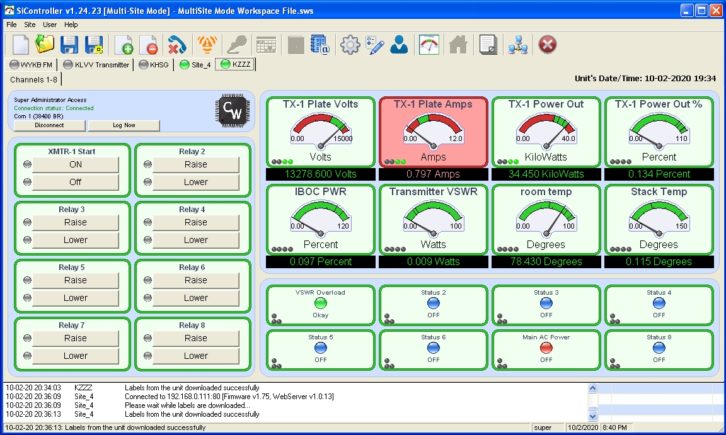
Specialized devices
At CircuitWerkes, Magrill said, “We did see the trend for more internet-based stuff coming back in the early teens. For the past seven years, we have had a streaming audio option on our units that allows the user to stream confidence audio to them or allows the remote control to receive an audio stream as a backup STL.”
Magrill expects there will always be demand for new remote controls, especially where telco access or streaming audio are desirable, but says many smaller stations can get by with the built-in IP interface that is now part of many transmitters.
“In place of the traditional remote control comes an increased need for remote monitoring,” Magrill said.
“For example, many stations now have multiple audio sources feeding a variety of outlets originating from one, or more locations. There is a need to monitor either the audio or the streams and to sound the alarm if these are disrupted. Although similar to a traditional remote control, there are specialized devices out there, including some that we make, that are more adept at handling these specialized monitoring functions and reacting when something is wrong.”
Magrill feels audio failure seems to be a far more common problem than RF plant failure.
“I like to have a simple backup audio method available to keep the station on the air at all times. For example, many small stations stream program audio over the internet. They do so knowing that they are trading reliability, complexity and high cost for simplicity, low cost but less reliability.”
This can lead to extended silence periods or frequently disrupted audio during times of high traffic.
“One way to stay on the air is to have a backup audio source at the transmitter site. I personally prefer a local PC running a freeware automation program so that it can play the legal IDs and jingles, but I’ve done this with just a local MP3 player, as well.
“When the audio monitor detects silence, it switches the backup source to the air, thus keeping the station on the air. Note that care must be taken when used with AM/translator combos to not accidentally end up with the AM playing one thing and the FM another. Proper design can avoid that problem.
“If using an onsite PC as a backup, I also like to wire the power switch out to a relay so that I can reboot the PC remotely.”
In closing
As Matt Leland noted at the beginning of this article, a modern remote control system can do a great deal.
“Trends can be identified and reported automatically by comparing current values with initial values in virtual channels,” he wrote. “Predictive analytics compares multiple parameters and highlights variations in data patterns to spot the need for maintenance. Timer channels track maintenance intervals, automatically scheduling the next service date when each task is completed.”
Remote controls enable engineers to focus on the most critical tasks, reduce off-air time and eliminate unnecessary travel.
And these manufacturers were agreed that remote controls systems will continue to evolve to serve radio’s changing infrastructures. Also, because many offer more than one type or flavor of control system, it’s important to do your homework about how each works, to understand the various levels of capability for different architectures, and to evaluate each company for its customer service because you want them available should a problem arise.
To learn more about this topic, start with the websites of the manufacturers quoted. Among the resources you’ll find are webinars, blog posts, “how to” and maintenance tips, application notes and white papers.
Vendor YouTube channels and Facebook pages can also be an excellent resource; as Bob Tarsio of Broadcast Devices put it, “Social media has revolutionized how customers can be informed, educated and sometimes entertained.”
